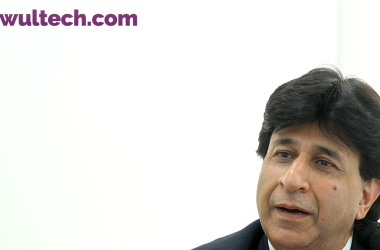
Printer, display and storage vendors are facing a host of game changing pressures from multiple and varied areas
Across the regional printer industry vendors are under pressure to move channel partners into the value space as they grow in revenue and need additional areas to sustain their growth. Pure play volume reselling and trading are being looked at as increasingly redundant as vendors themselves setup in-country channel structures. Printing vendors themselves are under pressure to develop products and solutions that can make paper printing into a more organised aspect of both corporate and personal workflow.

Printing devices
One of the most significant changes for the peripheral channel industry is the maturing of the regional country markets. With almost all global vendors focussing on in-country distribution and in-country partner development the need for a re-export hub like Dubai has begin to dry up. For a vendor like HP with its printing and imaging division primarily based on volume movements, there is a need to keep its partners ahead of the changing demand curve. Says Ali Nemati, Channel Sales Manager for the Middle East: “I already see a big wave of consolidation in the channel. The partners who do not refocus and retool are the ones going to be left behind.”
Nemati’s thinking is straight forward. There was a traditional way of doing business out of the UAE over the last 15 years based on re-export volumes, lean selling margins and continuous flow of demand. Resellers sustained themselves primarily on periodic volume rebates from the vendor. With demand levels drying up due to alternative in-country vendor channels, the UAE reseller is now probably a relic of the past.
This is also part of the business which HP IPG would like its partners to move away from because of the increasing risk levels. “Yes there are still plenty of dealers whose main focus is to sell a small number of printers primarily on price. This is where we are seeing a gap between the strategy of vendors as opposed to some of the partners who will be left behind,” says Nemati.

Other than the volume resellers, HP IPG’s channel partner structure includes the value added resellers and office printing specialists. While resellers in UAE focussed on the walk-in, re-export business may represent a possibly threatened species, value added resellers and office printing specialists are on the opposite green side of the opportunity index.
An office printing specialist or OPS partner typically sells a printing solution to a medium to large end customer. This may cover an optimum solution of networked multifunction printers in the form of an outsourced managed printing setup along with supplies and service support. The scale of the engagement may range from fully outsourced and managed printing environment, where the customer is focussed only on a periodic operational expense over a sustained period of time, to one of just selling the after sales support services. The OPS partners focus only on such contractual business.
With regard to the value added resellers or VARs, they typically have historical relationships with end customers in selected vertical market segments. HP IPG does not classify them into market segments but manages them as one subset. HP IPG would like to focus and develop partners who are themselves investing into selling more and more towards the end-customer. The approach is to educate VARs and keep them upto date about where the print business is going, the certification programmes, online tools, cofund sales engineers and so on.

The approach is not to interfere where and how VARs do their business. But it is to ensure vertical market segments HP IPG considers strategic are covered by the right number of partners. Partners are educated on the available market opportunities and if any of them refocuses or reinvests they are supported to rise within the ranks. Investing in educating partners and gaining market share have a close correlation for the vendor.
Across its channel community, HP IPG would like more and more of its reseller partners to convert into VARs and a chunk of its VARs to become into OPS partners, as a natural progression of the market dynamics. Since the sales cycles for OPS, VARs and resellers are different, HP IPG also follows a correspondingly different reward structure. More importantly, partner focus on end users helps to move the relationship between an HP IPG account manager and the partner away from a rebate led approach to one of deeper meaning.
Says Nemati: “The future of printing is going to be focussed on the value side of business.” He expects to announce the managed print services programme for partners in fiscal 2012.
Display devices
For monitor and projector vendor BenQ, sales pressure is being generated by a continuous need to match product attributes to market demand. “With the rapid growth of laptops across the last ten years, it was believed at one time the stand alone PC monitor was at the end of its life cycle”, says Manish Bakshi, General Manager Middle East and Africa. But vendors like BenQ have repositioned and redesigned their products to match specifications and end customer applications and requirements. BenQ’s monitor portfolio is now split into consumer and corporate focussed products.
For the consumer segment of monitors a significant innovation from BenQ is to bring in the capability of the full range of video inputs including HDMI and composite as well as provide the capability to be used with digital devices like PCs and set top boxes. The requirement of consumers to switch between various devices and media sources in their homes while viewing the best of breed display terminals is the current sales driver.
According to global consumer electronics vendor Samsung, consumers are now expecting multi functional monitors in their homes with truer than life, high definition picture quality. “We have noticed popularity amongst consumers for technologically advanced high definition, LED monitors that have an aesthetic design and can support 3D content,” says Anupam Birla, Business head Visual Display Unit, Samsung Gulf Electronics. Samsung’s 950 series of monitors is meant to cater to this aspiration demand for 3D LED HDTV monitors. The product is cross designed as a monitor, social media hub and TV, making it an all-in-one entertainment and work at home device.
While convergence of TV and digital monitor devices in the home is a key driver for vendor innovation, another factor is the possibility of increasingly intelligent TVs. Samsung’s Smart TVs are an effort in this direction. These TVs are directly connected to the internet and stream content from Samsung’s social media and news application hubs. To complete the interactivity Samsung’s Smart TVs come with a wireless Qwerty keyboard that provides the superior control required to manage surfing of social hubs instead of a standard TV remote keypad.
However the key feature and demand from consumers continues to be around 3D content and the adaptability of the monitor to switch from 2D to 3D display. Within the region, Samsung provides free streaming 3D content from its media hub as part of the value add it provides to owners of its Smart TV range. Says Justin Shaw, General Manager, Audio Visual sales division, Samsung Gulf Electronics: “We have seen an amazing rise in consumers using our applications, primarily our 3D video-on-demand service.” Samsung expects to double the amount of free 3D streaming content for its customers by the end of the year.
Another sales driver on the consumer and retail side is to have specialised monitors for gamers. Typically BenQ’s gaming monitors in the 24 to 27 inch size have enhanced colour gamut’s, higher resolution, faster refresh rates and better interlacing to satisfy the needs of professional gamers and entertainment arcades.
Says Samsung’s Birla: “We do see an interest in consumers for monitors that can deliver an integrated and immersive viewing experience. Gaming enthusiasts are also particularly excited about monitors that can support 3D gaming or monitors that are capable of converting 2D content to 3D.”
On the corporate side BenQ sees a demand for premium and high performance display products. For the premium corporate segment it has slim or paper thin LED monitors with enhanced contrast levels of 5M:1 and lower power consumption. Its high end monitors are also designed to meet performance requirements of graphic workstations.
LED lit displays are increasingly becoming the default standard and the range of pure LCD monitors are being phased out. Samsung expects 40% of the total monitor market in 2011 to be dominated by the LED form factor. OLED screens are expected to appear in 2012 as well as additional remote accessories for TVs. Another important inbuilt feature in monitors would be user ability to switch from 2D to 3D displays. Green technology monitors are also likely to be picked up ahead of other monitors with the same performance and specifications.
Is the TV heading towards a faster life cycle similar to other digital devices? Not necessarily according to Samsung’s Shaw: “The main TV is still a relatively large investment and is expected to perform for many years. Screen size still has the largest impact on experience and larger the screen size higher is the cost. This means more reluctance to change frequently.”
Another active product category for BenQ is display projectors. Over the last seven years with the burst of innovations in TV technology towards larger and larger screen sizes, this product category was almost written off. Today this segment is growing at close to 30% by unit volumes, which is more than laptops” says BenQ’s Bakshi. And the key driver for this is government spending in the education segment.
In general display projectors have multiple demand areas. They are primarily required for auditoriums, corporate meeting rooms, home theatres and video projection applications. However the most significant area from the extent of demand and potential revenue opportunity is classroom teaching in the public education segment. “All governments are spending significant budgets on education, whether it is in GCC, Africa or India,” continues Bakshi.
To adapt to this strong market driver vendors operating in this space have made significant innovations to their product specifications over the last few years. Most vendors now have a considerable range of models exclusively fitted for the education segment. Projectors meant for classroom training have to cope with cramped spaces including limited distance to the screen and limited ceiling height. Further the instructor managing the classroom should not block the projection and many times classrooms will have external and scattered light interference.
Some projectors for the education segment therefore have a short throw focus typically in the range of one metre, which allows the instructor to stand behind the projector and avoid shadow interference. This also avoids glare factor for the instructor.
For institutions with classrooms of varying sizes projectors have a flexible focussing range and the same screen size can be achieved even if the projector is relatively displaced by one to two metres. To make effective screen projection for classrooms with light interference some models have contrast ratio of 50,000:1 and a light intensity of upto 4,000 Lumens.
Projectors are also being fitted with LAN network cards so that multiple projectors can be controlled from one PC station. This is particularly useful during examinations where projections in multiple classrooms have to start and stop at the same time. Other accessories include wireless connectivity to keyboards and pointing devices and USB port adaptors. In the case of USB based content and a wireless keyboard, the projector is able to run Microsoft applications without the use of a PC.
Storage devices
A key life cycle feature of storage devices is the increasing storage capacity at the same price point over a period of six to twelve months. This natural progression of end users to move to the next level of storage is also a driver for the upgrade and replacement market. Another factor working in parallel is the explosion of content exchange across social media sites. Storage devices now not only need to backup files they must also be able to play them back across the web as streaming content or play them on attached monitors and TVs.
The whole storage market has become one of the fastest growing in the IT industry, says Cizar Abughazaleh, Regional director Consumer and SMB, Middle East, Turkey and Africa, EMC. Abughazaleh who manages EMC’s SMB and consumer products selling under the brand name of Iomega, believes the differentiator from other storage vendors is the value for money and ease of setup inbuilt in Iomega’s products. “You do not need to be a technical person to set up a security solution in your house or office.”
Since Iomega’s products are also focussed around the SMB segment and with SMB end users looking at moving to the next level of IT maturity, Abughazaleh believes this is another factor driving Iomega’s growth. “Since the total available market for SMB is huge in the region, business is growing and evolving fast,” he says.
The end to end product portfolio starting from entry level external storage devices into the TV setup boxes and further into the IX4 network storage devices supporting the personal cloud solution, creates considerable brand loyalty for end users. “It is a complete storage package,” explains Abughazaleh.
To support its range of new products into the market it has launched a premier partner programme. The super retail space is also an important part of its go-to-market approach. The plan is to setup a experience centres in every major country associated with a key super retail outlet. Iomega has already set up an experience centre at Sharaf DG in Dubai, UAE.
With a range of demand forces operating in regional markets, peripheral vendors and their partners have their challenges set out in front of them.





